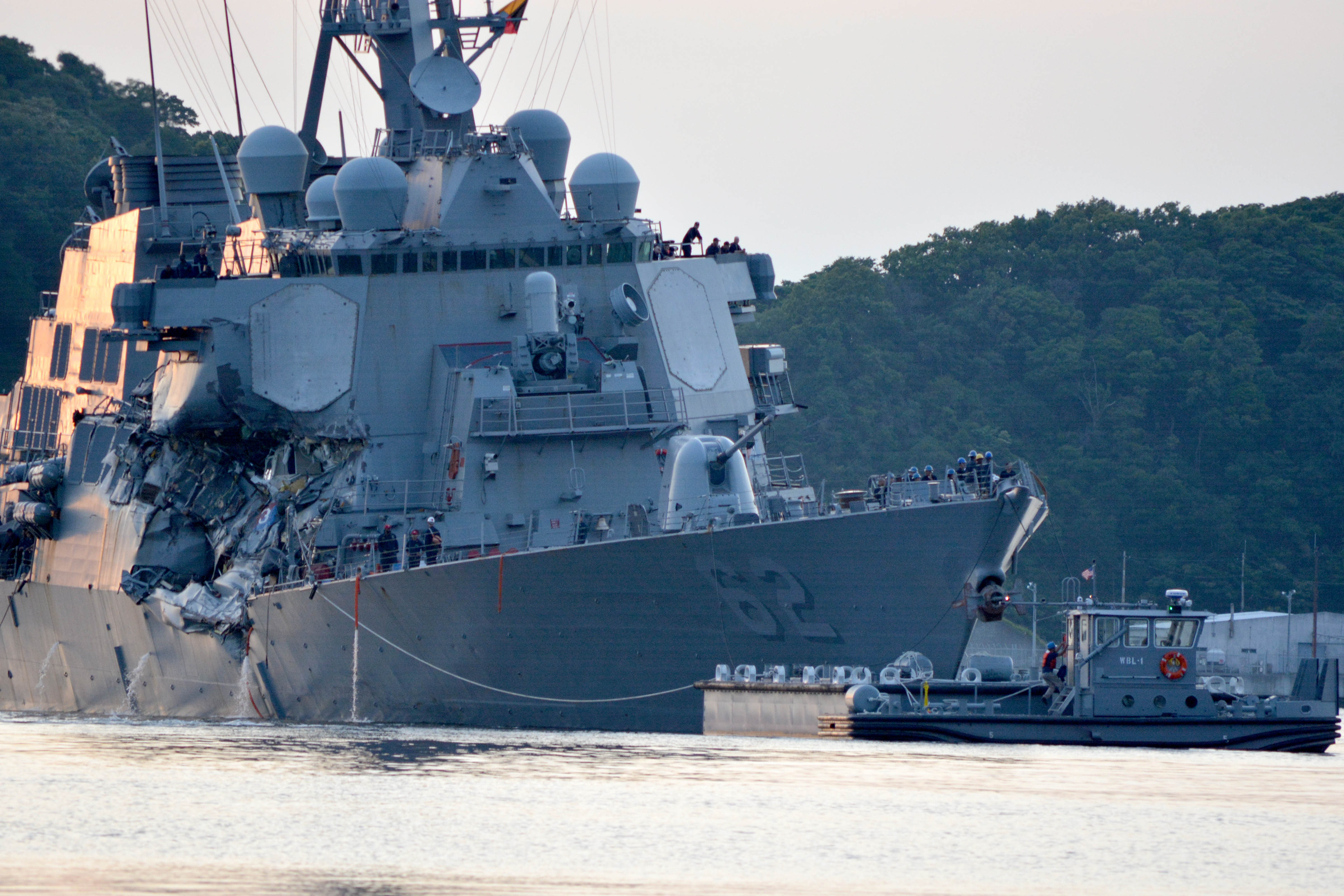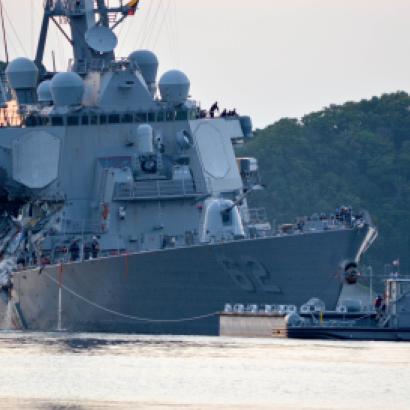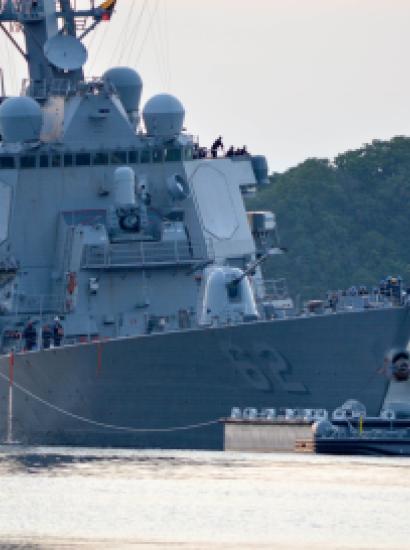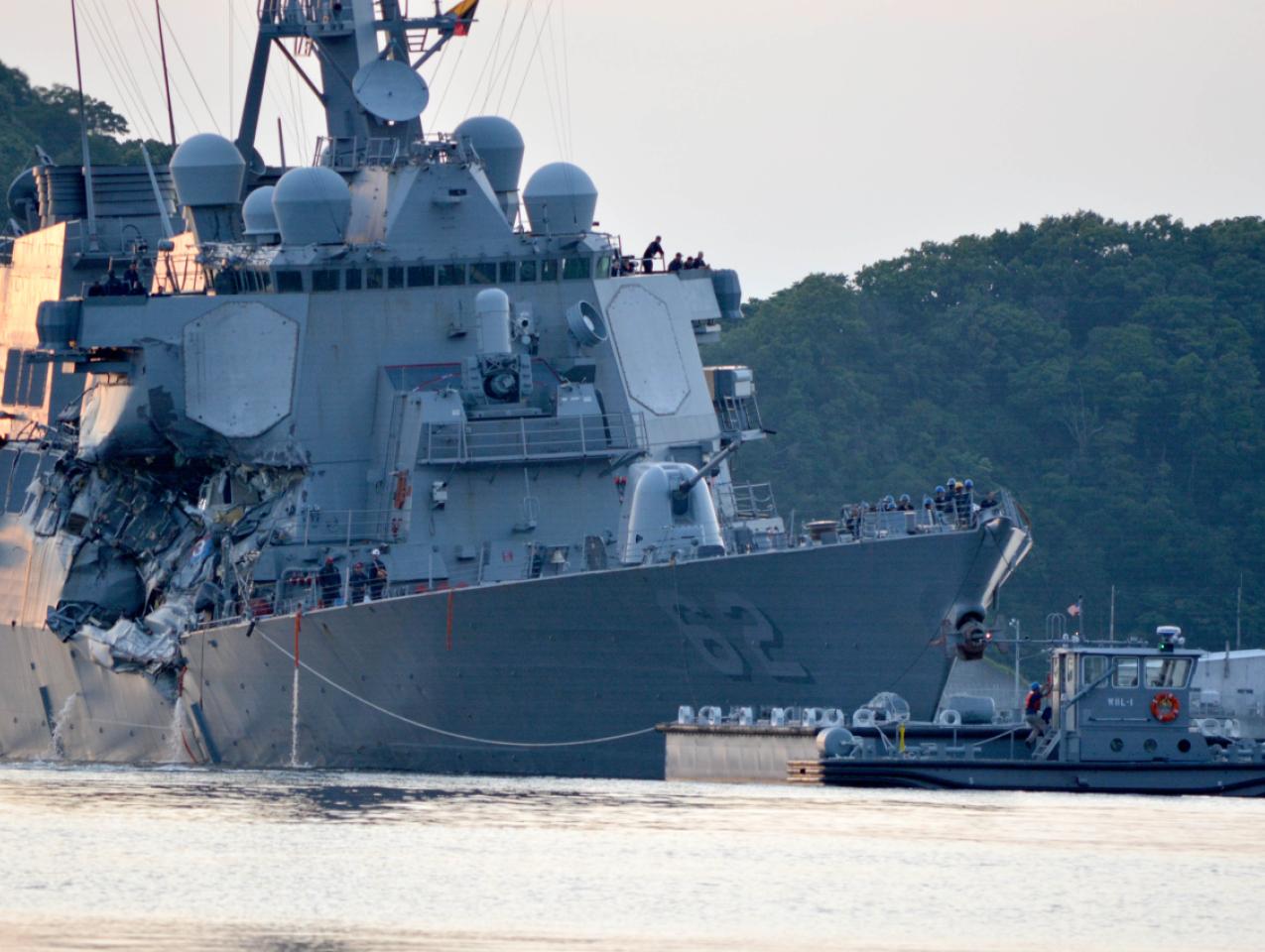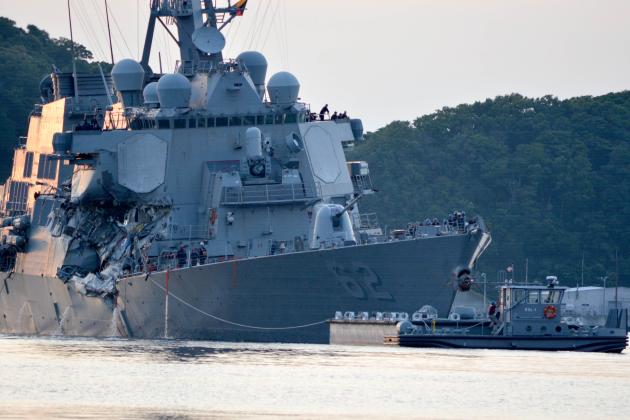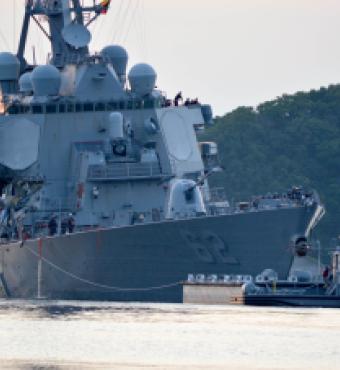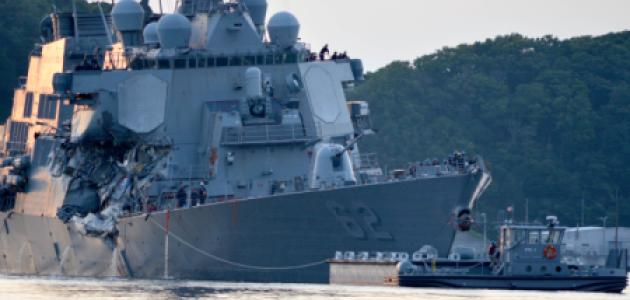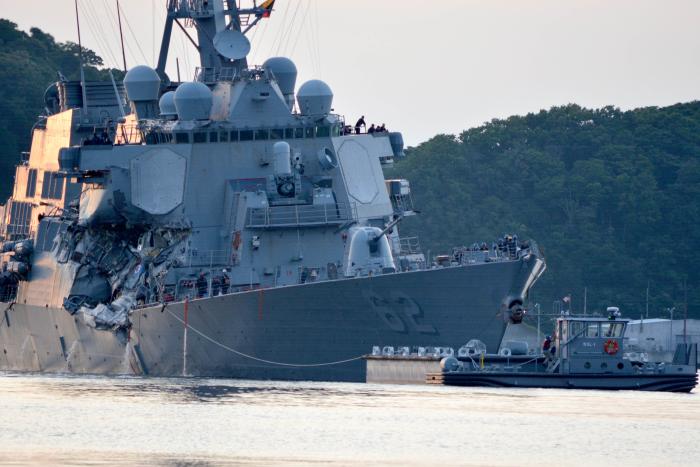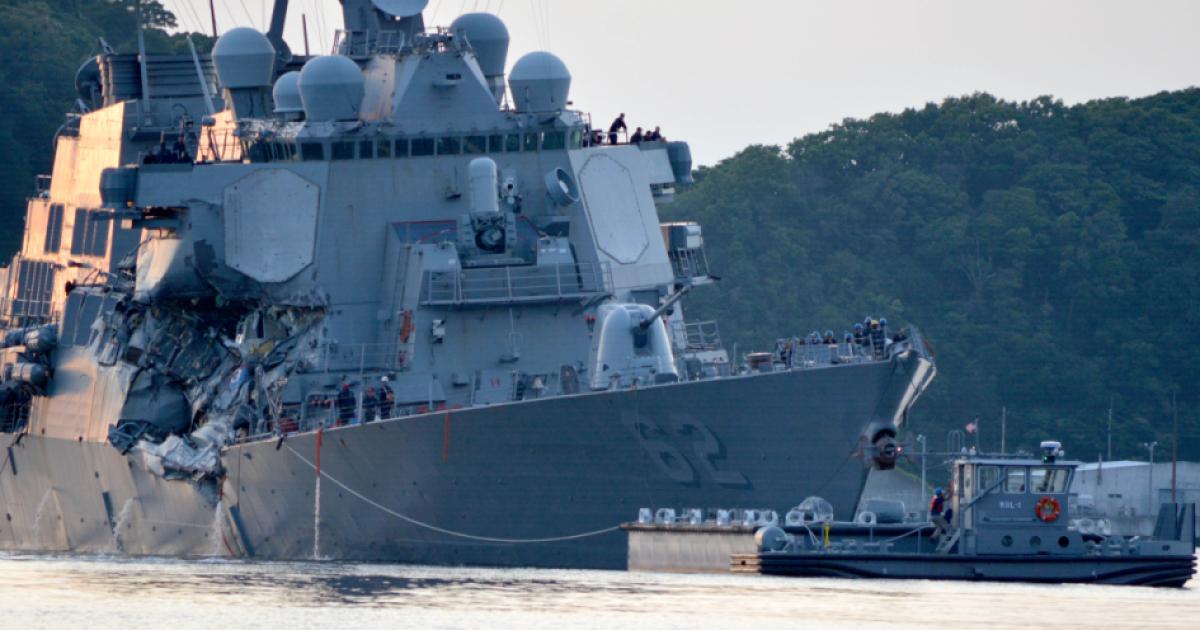- Security & Defense
- US Defense
- International Affairs
- US Foreign Policy
- History
- Military
Seventeen sailors have been killed this year in accidents involving two destroyers, the USS John S. McCain and USS Fitzgerald. The McCain incident spurred Admiral John Richardson to order a one-day, fleet-wide “operational pause” to search for the root causes of the collisions, but the Chief of Naval Operations did not need to look outside Washington for answers: the nation’s demands on his service have not diminished since the end of the Cold War, but the nation’s investments—in ships, aircraft, equipment maintenance, and sailors and their training—have sunk to unfathomed depths.
While admitting that he sounded like a “broken record” in testimony to Congress, the Navy’s number two leader succinctly explained the service’s dilemma: “Our Navy faces increased demand without the size and resources required to properly maintain and train for our future.” The Navy’s “battle fleet” is currently a bit more than half the size it was a generation ago. At the same time, America’s maritime commitments have grown, particularly in the Pacific and Indian Oceans and the Persian Gulf. Moreover, the reductions in forward-stationed land-based ground and air forces—and the reluctance to commit them to long-term irregular warfare campaigns in the Middle East—has exacerbated the pressure upon the Navy to project power ashore. For example, from their first use in the 1991 Gulf War through the Trump Administration’s strikes on Syria in April, the Navy has shot more than 2,100 Tomahawk missiles, while Navy carrier-based aircraft have flown hundreds of thousands of sorties in support of operations in Iraq, Afghanistan, and Syria. That is a historically unprecedented capability, but a very expensive way to provide fire support to an isolated combat outpost or to kill a terrorist leader.
Recently, we at the American Enterprise Institute convened a group of retired flag officers to conduct a series of “force-generation” exercises to quantify the Navy’s capacity to respond to deployment demands ranging from steady-state presence missions to simultaneous—but small-scale—crises. The consensus conclusion, also ratified by the many civilian role-players in the game, was that the combination of constant commitments and diminishing resources of the past two decades had “broken the camel’s back,” leaving the Navy too small, too old, and too tired yet operating frenetically to fulfill an expanding number of missions.







